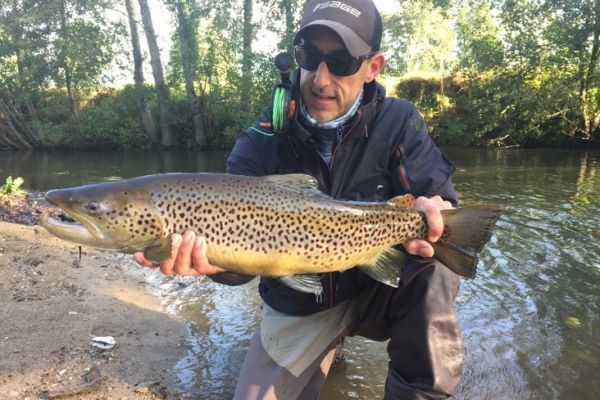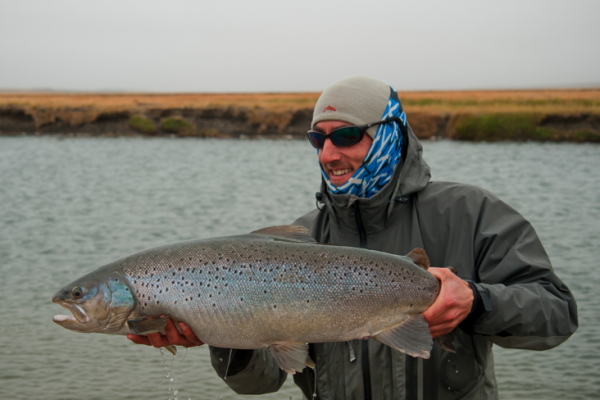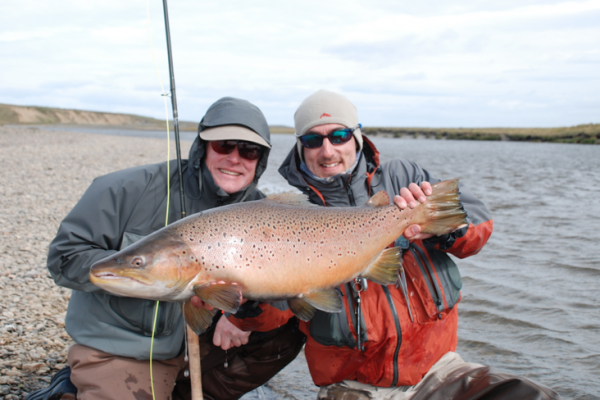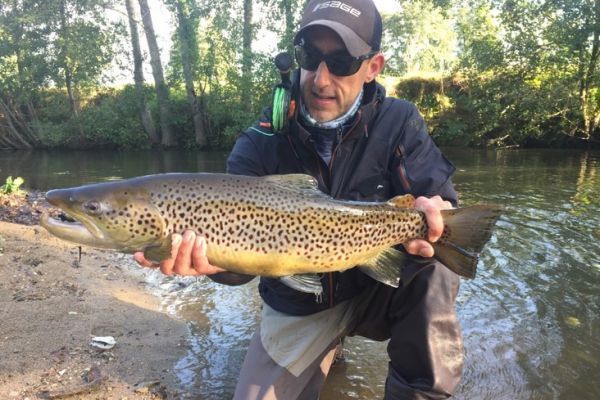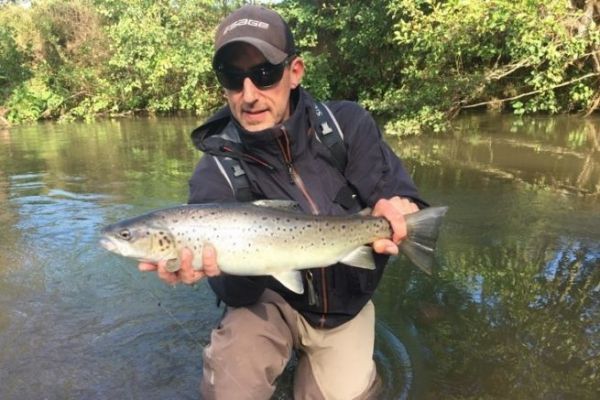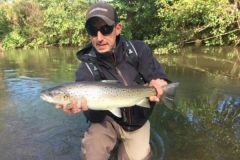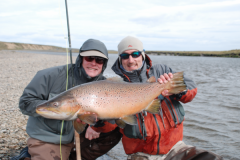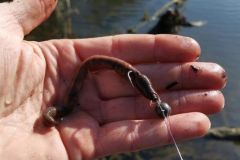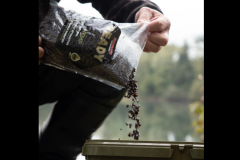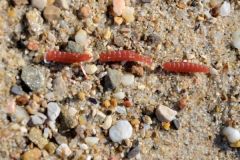Knowledge of fishing spots and techniques
As always, knowledge of the habits and customs of the fish you're after is of the utmost importance, and even more so when you're looking for a migratory fish that feeds little or not at all, as is the case with sea trout.
To fish effectively, you need to understand how they work, the type of position they prefer, and the season and time of day. Of course, it's through numerous trips to the water's edge that you'll gradually record this information and adapt your fishing.
Depending on your fishing technique, you'll also need to look for a particular type of spot. Lure fishing is very different from fly fishing.
Fly-fishing for sea trout can be done in a variety of ways throughout the season.
There are enthusiasts of traditional drowned-water fishing (even if it is possible to modernize this approach), which is certainly the predominant way of fishing for this species in France, but there are also more modern fisheries such as nymphing.
Some anglers will also try other approaches such as dry-fishing with inert drifting as for trout, or more specifically for migratory fish by having their imitation dredged by clawing the surface.
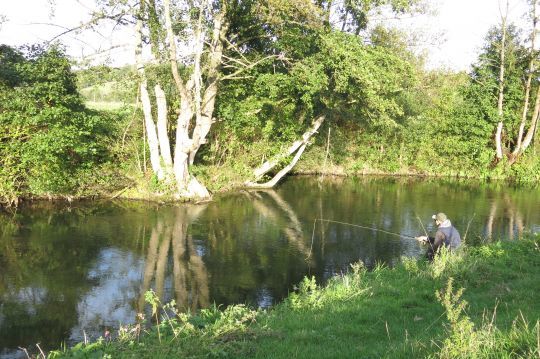
Drown and tube fly fishing for sea trout
In most of the world's rivers, sea trout are sought after on drowned flies.
A drowned fly is a fly that swims underwater and is used for downstream fishing. They are mounted on single to treble hooks in sizes 12 to 2, depending on the season and conditions. These flies can also be mounted on tube flies, allowing you to modify the weights and weights.
Flies vary from country to country and from river to river, depending on many factors such as water color and bottom, conditions (water color and temperature), local influences, beliefs and results, etc.
Fishing is therefore done downstream, and the angler will drift his fly(s) to interesting spots in inert drift, using the current or animating his flies to give them life, make them undulate or vibrate, but also rise towards the surface. It's during the drift, but especially when the fly is rising, that the trout come to take or tap the fly. The angler can influence this rise by animating his flies.
The aim is to provoke a posted fish, as sea trout are territorial and aggressive fish that defend their position. The touch is characterized by a tug and then a heaviness on the line, to which you will have to respond with a fairly firm rod retrieve. Unlike salmon, sea trout don't turn around when they're caught, so you have to hook them to set the hook in the fish's mouth.
The angler can adjust the density of his line, tip or polyleader to fish at different densities and thus find active fish.
The size and color of the fly is important, and each angler has his own beliefs and favorite patterns. Confidence in your flies is vital for good fishing.
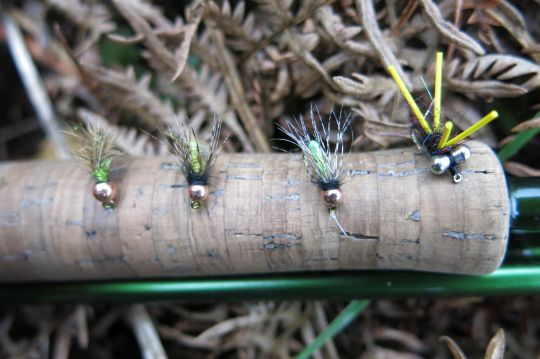
Sea trout nymph fishing
For many years now, sea trout have been caught using nymphs, both in France and abroad.
There are several possible nymph fishing techniques for sea trout:
- Downstream nymph and drowned-water fishing
The nymph can be used as a sinker and cast downstream, with or without a polyleader to bring it to a certain depth. One or more mendings (repositioning of the fly line upstream) are generally performed just after casting to slow the fly down.
In Argentina, on the Rio Grande and Rio Gallegos rivers, but also in Iceland, this is one of the most common techniques used to catch sea trout weighing between 5 and 15 kg when water temperature is above 12°C. These nymphs often have small plastic legs that emit vibrations and seem to annoy the sea trout. But this is not always the case. They are often animated to excite sea trout.
In Normandy, this technique also works. A straight hook is often used rather than a curved one.
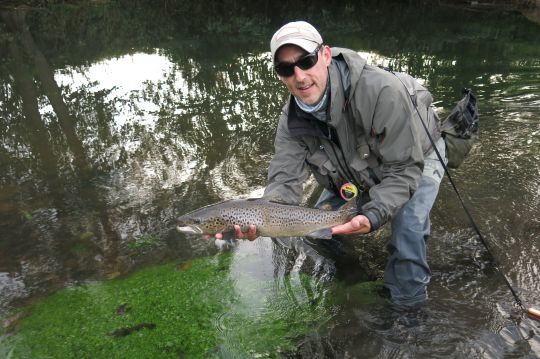
- Line nymph fishing as for trout
On Normandy rivers, nymph fishing is often used in sectors where the bottom profile is very varied. This allows you to keep the nymph close to the bottom at all times and pass close to the fish, varying the weighting of the nymph. Sea trout, brown trout and grayling all respond well to this technique. A two-tone fluorescent line can be used, as for trout, to detect the touch. The technique is identical. Only the nymph models and tip diameter are different (thicker to combat these nervous, powerful fish).
-Indicator nymph or "cork" fishing
Indicator nymph fishing, unlike line nymph fishing, allows you to support a nymph at a certain depth using an indicator, often made of foam, synthetic fibre or any other type of indicator. A friend, Gaël Even, used this technique, widely employed in the US, to search for sea trout in the deep holes of the Touques, his main playground for sea trout. It produced some very fine fishing even in the middle of the day, and particularly on sunny days when drowned fishers desert sea-trout rivers.
This often-criticized technique is much more technical than it seems. You need perfect drifts and the right depth to pass flush with the fish. Even though sea trout take nymphs quite well, they rarely shift as they feed little or not at all. You also need an excellent knowledge of the positions and water conditions.
Sea trout, often referred to as lucifuges, can come to rest in relatively little water and in the sun. In such cases, they can be spotted and fished on sight.
This type of fishing is of course highly technical, as you need to be discreet, precise and concentrated to get the right pass and trigger the trout's grip.
The technique is identical to trout fishing, except that once again sea trout feed little and are therefore less inclined to take nymphs.
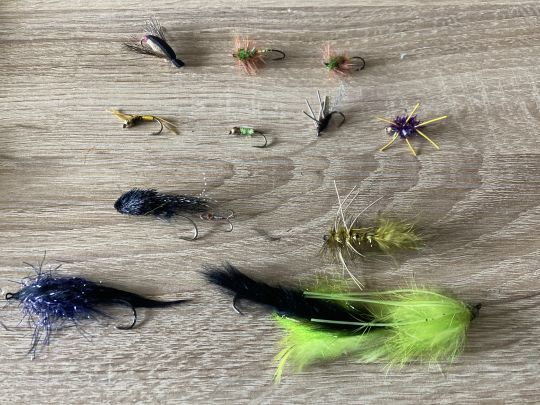
Sea trout surface fishing
Sea trout can be caught on the surface just about anywhere in the world. However, for reasons unknown to me, they are only rarely caught on the surface.
Whether dry drifting or surface dredging, sea trout love to ride flies that drift on the skin of the water.
- Dry fishing
Sea trout are migratory brown trout. Whatever their size, they retain the instinct to come to the surface to gobble.
Some anglers in Brittany and Normandy regularly catch sea trout with large sedges and terrestrials. These are often finnocks (young sea trout), but quite large sea trout are also caught this way, especially in autumn. This may be due to the fact that they become a little more fario and feed a little, but also become more aggressive as spawning approaches.
- Dredge fishing
Salmon and sea trout have always been "annoyed" by a fly that skates on the surface and creates a characteristic V-shape.
In Argentina, where I was lucky enough to guide for 6 seasons on the famous Rio Grande, I was able to catch and have caught many sea trout by dredging a small bomber (green machine) or small tube flies (hitch).
In Iceland, this technique is sometimes also used on sea trout, as it is widely used for salmon and works wonders.
In the UK, some anglers pursue sea trout with large surface and sub-surface deer-hair flies, with good results.
In France, this type of fishing is, to my knowledge, almost never practised, for reasons I don't know. What is certain is that the density of sea trout is not the same as some of the international destinations I've mentioned, but I think this technique would be worth a try. Maybe we'll get some surprises!
